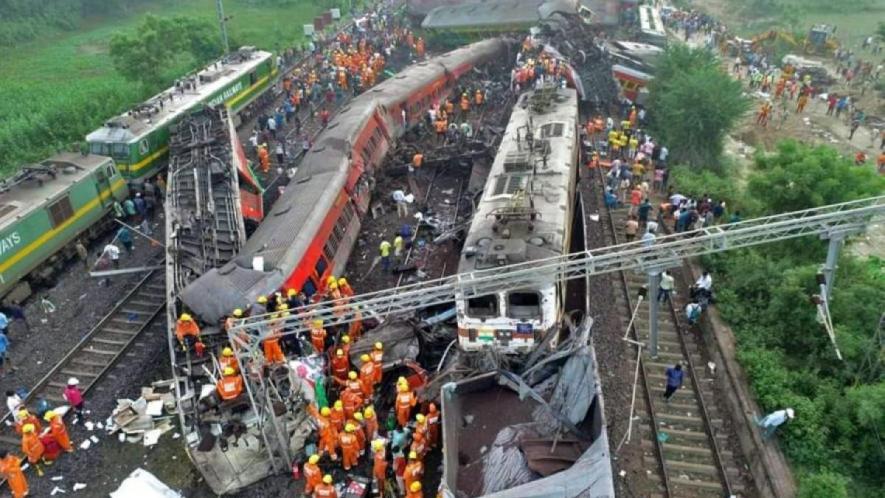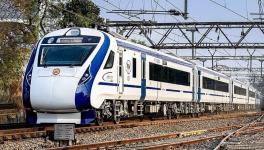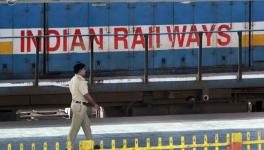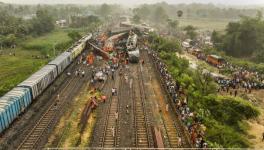India’s Worst Train Accident in 20 Years: Privileging Vanity over Safety

File Image
The three-train accident involving the Shalimar Coromandel Express, Yashwantpur Howrah Superfast Express and a goods train is India’s worst train accident in 20 years. Confirmed deaths as of 7 June are 288 persons.
The accident occurred near Balasore—at the Bahanaga Bazar railway station—when the Coromandel Express from Howrah, going towards Chennai, crashed into a goods train. While the main line was free and the signal green, the Coromandel Express was diverted onto a loop line where a stationary goods train stood and crashed into it. This was the first collision. The second was when the derailed bogies of the Coromandel Express hit the Howrah Superfast Express from Bengaluru. Its trailing bogies derailed as a consequence. The high death toll was due to two near-simultaneous collisions and derailments at high speeds. The 288 death toll makes it the fourth-largest disaster in the long history of the Indian Railways.
In a somewhat bizarre response, the BJP’s trolls started a campaign that the accident was engineered by people who wanted to defame the Narendra Modi government. The initial claims were that a nearby ISKCON temple was a mosque and the station master was a Muslim. Both claims were quickly proved to be fake news. While the Railway Minister initially claimed signal failure as the cause of the accident, he then appeared to be pushing the story of wilful sabotage.
The Central Bureau of Investigation has been asked to probe the matter, even before the Railways have determined the cause of the accident. The Indian Railways has established procedures to address all such accidents and has the necessary technical knowledge. The CBI does not have the ability to examine the signal and interlocking equipment of the Railways. The CBI is, apparently, being used to divert attention from the safety system failure to the usual suspects: minorities and anti-national elements.
The Comptroller and Auditor General (CAG), in its Performance Audit Report on Derailment in Indian Railways (Report number 22 of 2022), pointed out that the “incorrect setting of points and other mistakes” is the primary cause of derailments. Why, then, pre-empt the Railways’ enquiry with a CBI one?
Both trains were travelling at nearly 130 km an hour. As the Up Main Line and the Down Main Line were free, the trains could travel as fast as the maximum speed limits of the sections. Should the protective devices on the track sections not have acted to prevent such an accident? How could a running train be diverted to a section with a stationary train? Considering that signalling and transfers from one track to another are automated in the Indian Railways, how did this train accident happen?
When trains have to change tracks, there is a set of physical devices on the tracks, such as junctions and crossings, which are operated by appropriate levers. The interlocking and safety systems ensure that such movements or switching of tracks ensures safe operations and conflicting movements. The signals, red, green or yellow, are also based on the position of the levers and the permission from the signalling system. Once a safe position is reached, appropriate signals are given to the loco pilot, and the levers are locked, preventing further movement until the train has passed.
Earlier, these levers were operated manually. But for quite some time, they have been automated. From old-fashioned interlocking and signalling systems based on relays, we have moved on to solid-state and microprocessor-based systems. The interlocking and signalling systems control all mechanical levers and the signalling lights. In case of a system failure, all signals turn red, preventing any movement of the trains.
According to preliminary reports, the interlocking and signalling systems functioned “properly”, yet the position of the track elements that decide which section of the tracks that train would travel did not match what the signal indicated to the loco pilot. While the signal for the Down Main line for the Coromandel Express was green, the point on the track, which guides the train onto a track section, pointed to the loop line and not the main line.
How did the interlocking system fail to warn the engine driver? As reported, a boom barrier at a level crossing near the Bahanaga Bazar railway station gave faulty indications. A level crossing must close for a train to get the green signal. This permission appears to have been bypassed as a shortcut. Unfortunately, it seems to have led to bypassing the protections and proper positioning of tracks.
Instead of examining what failures occurred—in the signalling system, a human failure due to faulty maintenance or if norms were bypassed—a more sinister story of intentional sabotage is being pushed on social media. This is being aided by various statements from the top echelons of government to divert attention from the failure of the Railways.
Even before the Railways conduct a proper enquiry, a witch hunt has started, and the CBI has been entrusted with finding the “culprits”. The clear signal to the Railways and the CBI is to find scapegoats and not focus on systemic failures that led to such a major tragedy.
The 2022 CAG report identified the systemic failures in the four years from April 2017 to March 2021. It found that a large number of accidents were attributable to the ‘Operating Department’, which oversees or carries out maintenance works. According to the CAG report, there were 275 instances of such problems, with ‘incorrect setting of points and other mistakes in shunting operations’ accounting for 84% (or 231) cases.
It is a matter of chance that having crossed 231 such mishaps without a major accident, the 232nd mishap led to a massive tragedy in Balasore. The safety of trains is not a game of dice: we need absolute safety as our goal and not play a game of percentages.
Why do we have such a large number of problems in the setting points and maintenance of critical track and signalling equipment?
Today, the Indian Railways lack adequate staff for critical operations and maintenance functions. It has over three lakh vacancies, a significant part of which are for technical and operating staff, such as loco pilots, guards, and station staff, including maintenance persons. It means we do not have adequately trained staff for critical duties, or they are overworked. Both are recipes for accidents waiting to happen.
Signal failure is not the only safety issue in the Indian Railways. The CAG report also points out that out of 1,129 derailments, 422 were attributable to engineering issues, including ‘maintenance of tracks’ and ‘deviation of track parameters beyond permissible limits’.
While the Indian Railways neglects routine maintenance and makes employees work for even 16 continuous hours, it has embarked on ambitious targets for new faster trains, such as the Vande Bharat Express trains. Seventy-five such trains are proposed to be launched by August 2023, each worth Rs 115 crore. As of 31 May, 17 of these trains are operational. The Indian Railways is also taking up the bullet train scheme connecting Mumbai to Ahmedabad at an estimated cost of Rs 1,08,000 crore. All this while underfunding its safety programme.
In paragraph 3.3.1 of its executive summary, the CAG report says the Indian Railways is supposed to have contributed Rs 20,000 crore over five years to its safety budget from internal resources, apart from the Rs 80,000 crore budgetary support it gets from the central government. CAG finds the shortfall of funds for this safety budget—the Rashtriya Rail Samraksha Kosh (RRSK)—from internal resources was “to the tune of Rs 15,775 crores (78.88%) out of the total share of Rs 20,000 crores”. According to CAG, this “defeated the primary objective of the creation of RRSK to support absolute safety in railways”.
In other words, the Indian Railways neglected essential safety functions while trying to execute prestige or vanity projects, a completely wrong priority. And to cover it up, it has mobilised its troll army to vilify the operating staff and ask the CBI to investigate a possible conspiracy even before a proper Railway enquiry.
Get the latest reports & analysis with people's perspective on Protests, movements & deep analytical videos, discussions of the current affairs in your Telegram app. Subscribe to NewsClick's Telegram channel & get Real-Time updates on stories, as they get published on our website.
























